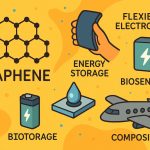Technological progress has brought a new generation of life-saving tools that help rescue teams act faster, more accurately, and more safely. From natural disasters to medical emergencies, these innovations combine engineering, artificial intelligence, and advanced materials to protect and save lives in extreme situations.
Drones for Search and Rescue
Modern rescue drones are equipped with thermal imaging cameras, radar sensors, and AI-based recognition systems. They can locate people trapped under rubble, stranded in floods, or lost in forests — even in low visibility conditions. Some drones can deliver medical supplies or establish temporary communication networks in disaster zones.
Wearable Health Monitors
Lightweight wearable devices can continuously track vital signs such as heart rate, oxygen levels, and body temperature. Emergency responders use these to monitor patients in real time and detect sudden changes that require immediate action. In large-scale emergencies, this technology allows quick triage and prioritization of care.
Robotic Rescue Systems
Search-and-rescue robots can navigate dangerous environments where it’s unsafe for humans, such as collapsed buildings, toxic areas, or underwater wrecks. Equipped with cameras, manipulators, and advanced mobility systems, they can remove debris, deliver supplies, and even extract trapped individuals.
Smart Emergency Shelters
New portable shelters are lightweight, weather-resistant, and easy to set up. Some models integrate solar panels, water purification systems, and satellite communication to keep survivors safe and connected until full evacuation.
AI-Powered Disaster Prediction
Machine learning models now analyze massive datasets from satellites, seismic sensors, and weather stations to predict earthquakes, floods, and storms earlier than traditional systems. This extra time allows communities to evacuate or prepare emergency measures more effectively.
Future Directions
As these technologies evolve, we can expect more automation, integration with renewable energy sources, and real-time coordination between rescue teams worldwide. The ultimate goal is not just faster rescue, but also preventing disasters from causing harm in the first place.
Glossary
- Thermal imaging camera – A device that detects heat and produces images based on temperature differences.
- Triage – The process of determining priority of treatment based on the severity of a patient’s condition.
- Machine learning – A type of artificial intelligence that enables systems to learn from data and improve over time.
- Manipulator – A robotic arm used for precise handling of objects in hazardous environments.
- Satellite communication – Wireless communication using satellites, enabling connections in remote or disaster areas.


